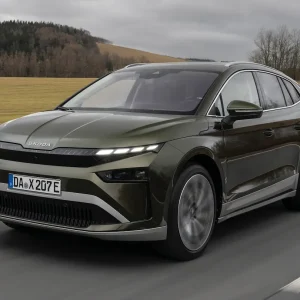Key changes with this mid-life refresh of the Hyundai i30, the brand’s competitor in the core fleet lower medium marketplace, include a new front end and alloys, but the big stories are underneath and on the spec sheet.
A new automatic gearbox makes the i30 a competitive alternative for drivers who want a self-shifter. The seven-speed double-clutch DCT transmission replaces the previous six-speed alternative, knocking eight bands of the benefit-in-kind rating thanks to a plunge from 145g/km to 109g/km, and saving a 20% BIK payer up to £25 per month. Changes in the rest of the range see emissions down by 3-10g/km.
Hyundai has also simplified the range line-up, changing the specification levels from the previous Classic, Active, Style Nav and Premium to S, SE, SE Nav and Premium in an attempt to make it easier for user choosers to understand the order and progression through the range. The change puts the i30 in line with the majority of Hyundai’s current range, and all models will follow the new naming strategy by the end of this summer.
The new auto costs £1300 over the price of the six-speed manual, and is offered on both the 110hp diesel driven here, and the 133hp diesel. It’s an impressive new addition, occasionally delaying a change a touch too long, but generally offering smooth and well-timed transitions. Unlike most, it also holds onto gears in manual mode, rather than deciding to shift up even when the driver has selected to control the ratios.
The diesel engine’s refinement is a weakness, and it is especially noisy pulling away from a standstill, although it does feel more potent than the posted 109hp power figure. In general, the i30 is set up for ride quality and comfort rather than sportiness, and the steering isn’t particularly communicative compared with better-driving rivals.
The i30’s mid-life refresh adds extra equipment to all models, including electric lumber support on the SE, specifically in response to requests from fleet drivers.
There are no interior changes apart from those to the specification, so the cabin remains fine without troubling the mainstream class-best for quality and finish. But it’s adequate, and it’s not unfair for a car with such a competitive P11D to be built to a budget.
The whole-life costs put the i30 in a good position, somewhere in the front to middle of the key volume models, and efficiency matches Ford’s diesel auto Focus, if giving away 7g/km to the Seat Leon,
which means the Volkswagen-owned brand can offer a better cost per mile figure.
Hyundai hopes uptake of the auto doubles from the previous 10% of i30 registrations. That’s something that should be more than realistic, given the efficiency leap coupled with it being a well-engineered gearbox that interacts nicely with the 110hp diesel, despite the power unit – impressive in delivery and feeling more potent than 110hp – being well off the class best for refinement.
Hyundai i30 1.6 CRDi 109 Blue Drive SE Nav |
| Model price range £15,195-£23,595 |
| Residual value 30.9% |
| Depreciation £14,340 |
| Fuel 67.3mpg |
| Service, maintenance and repair £1562 |
| Vehicle Excise Duty £40 |
| National Insurance £1717 |
| Cost per mile 45.5p |
| Fuel consumption 67.3mpg |
| CO2 (BIK band) 109g/km (19%) |
| BIK 20/40% per month £66/£131 |
| Warranty 5yrs/unlimited miles |
| Boot space (min/max) 378/1316 litres |
| Engine size/power 1582cc/109hp |





